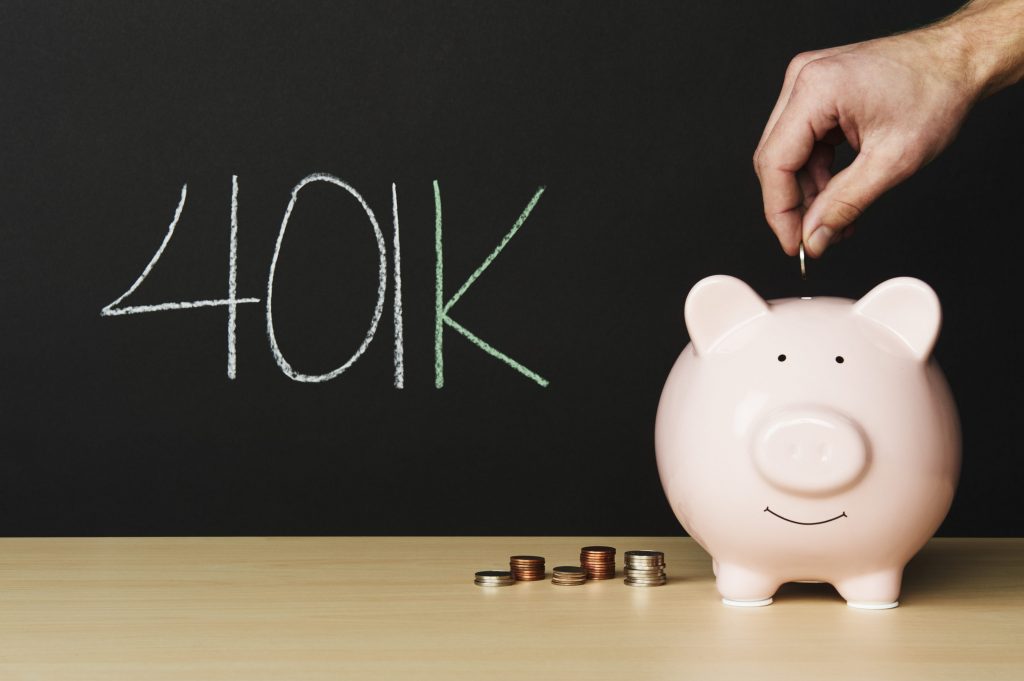
Looking for a way to make your new year happier? How about a way to easily boost your retirement savings balance by 10%? For many savers, that adds $68,723 to their nest egg. All you’ve got to do is contribute just an extra percentage point to your 401(k).
That’s a 10-for-one payoff. How does this work? Your savings and their earnings compound over time. Potentially a lot. It’s also because of a hidden benefit that many savings account owners overlook or at least take for granted: your company match.
Retirement Savings: Small Steps, Large Results
Many 401(k) account owners don’t think small contribution changes can add up to much. But they can.
“One percentage point more in savings may seem like a small amount,” said Eliza Badeau, vice president, Thought Leadership at Fidelity Investments. “It may not seem worth doing. But it is. After 20 or 30 years, even a one percentage point increase in savings can make a big positive difference in your account balance.”
One reason contributing even a little bit more pays off is simply the benefit of compound earnings growth. Another reason is that you’ll almost certainly receive a company contribution.
Among all of the 401(k) plans overseen by fund giant Vanguard, 96% of employers offer a contribution. The most common type is a match of 50 cents for every $1 you kick in, up to 6% of your pay.
Spelling Out Why Small Hikes In Savings Rate Boost Your Balance
Look how small changes can boost your 401(k).
Let’s say you are 45 years old. You earn $70,000 a year. You get pay raises averaging 1% a year. Your retirement savings balance is already $93,400. That’s the actual average balance for 45-year-olds in plans whose records are kept by Fidelity.
Let’s also say you plan to retire at age 65. Meanwhile, you’re contributing 5% of your pay yearly. And returns on your balance average 7% a year. That’s a conservative assumption. Large-cap stocks like those in the S&P 500 Index actually grew much faster, at 10.25%, a year from 1926 through Nov. 30 of this year, according to Morningstar Direct.
So how big will your retirement savings balance be by age 65? Your nest egg will be around $602,000, according to the Bankrate.com 401(k) calculator.
Boost Your Retirement Savings By 1 Percentage Point
Now watch what happens if you boost your savings rate by one percentage point, starting at age 45. This time, by age 65 your retirement savings balance is more than $650,000.
That’s an 8% bigger balance by age 65. All you had to do was boost your savings rate by 1 percentage point.
Look at this in dollars. You increased your annual contribution by $700 to a total of $4,200. And your balance after 20 years gained $48,107.
Why so much? Because your employer’s cumulative contributions during 20 years jumped $7,784 to $46,702.
What’s the bottom line over the 20 years from age 45 to 65: You increased your savings rate by one percentage point a year. The impact:
- Costs you: an additional $15,567 over 20 years.
- Costs your employer: an additional $7,784.
- Pumps up your balance: an additional $48,107.
What If Your Annual Pay Is $100,000?
What if your career is more lucrative? Let’s say at age 45 your annual pay is $100,000. Everything else stays the same: you save 5% of your pay. Your employer kicks in the same 50%, up to a maximum of 6%, of pay match. You get 1% annual pay raises.
You retire at 65. Your 401(k) balance is just over $705,000.
But if you goose your rate of savings up to 6% at age 45, by age 65 your nest egg will be nearly $774,000.
You end up $68,723 richer. That’s a nearly 10% improvement, the payoff for upping your annual contribution by just 1 percentage point.
Of course, outcomes can vary. It’ll depend on how much you contribute, when you start, how you invest your account and how soon you boost your contribution and by how much.

Employers Know The Big Value Of Small Steps
Employers know the value of every extra dollar you contribute to your retirement savings account.
In the first half of 2020 as the coronavirus pandemic put a choke hold on the economy, many businesses cut back on 401(k) contributions to conserve cash. But by June, 94% of enterprises that suspended their 401(k) match had reinstated them or started the wheels rolling to reinstate in the next plan year or the next calendar year.
“Employers know the importance of every dollar that goes into your account,” Badeau said. “They know it makes a big difference in your retirement lifestyle. And they know it makes a difference in being able to attract and retain employees.”
Fidelity’s Retirement Savings Tips
Badeau’s advice for workers who have a 401(k) account:
- “If you can increase your contribution by one percentage point, do it,” she said. “You may not notice another $10 or $12 taken out of your paycheck. But those small increments will help you reach your long-term savings goals.”
- Badeau added, “Start early. The sooner you contribute more, the bigger the benefit. And the more of a benefit you’ll get in the form of bigger employer contributions.”
Badeau knows times are difficult for many. “We understand times get tough in a pandemic. You need to do what you need to do with your paycheck. But if you can contribute more and get more of an employer match, do it. Otherwise, you’re leaving a pay raise on the table.”


























